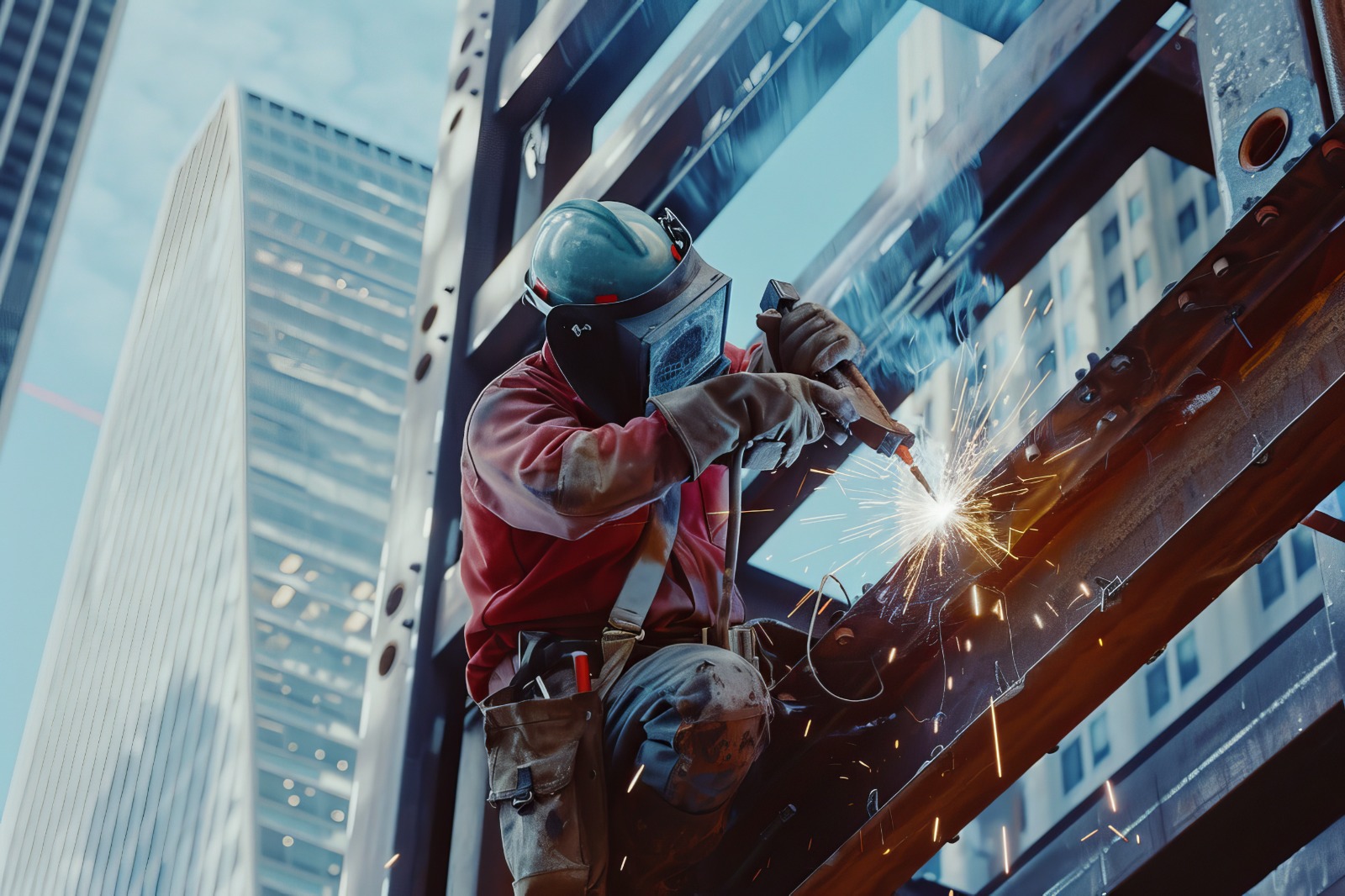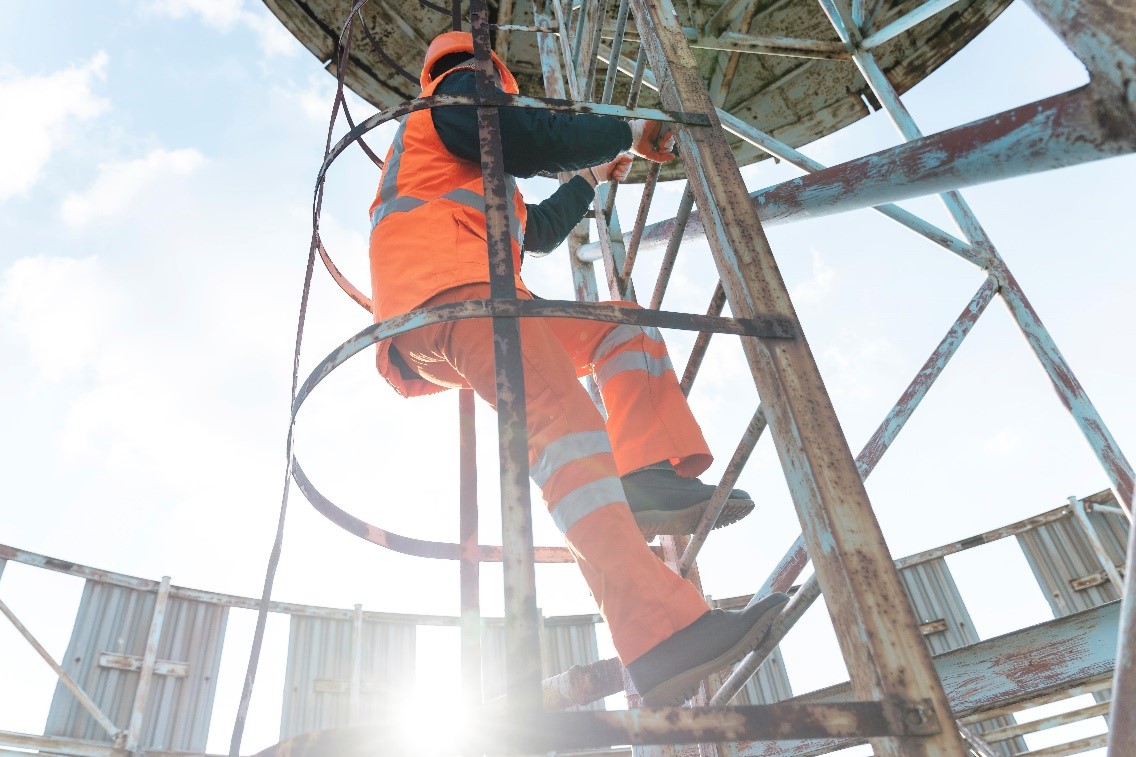
Occupational Health and Safety in Working at Height
Occupational accidents that occur while working at heights are one of the most important problems of working life. Unsafe working at height is one of the leading causes of death in our country and around the world. It is among the main causes of work accidents.
What is Height?
Height can be defined as places where we cannot climb by stepping. Even though people's heights are different from each other, a person's balance point is the second lumbar vertebra. In other words, places that pass the second lumbar vertebra are considered high.
What is Working at Height?
All kinds of places where there is a level difference and where there is a possibility of injury as a result of falling and which can be climbed with the help of an elevation. It is a study conducted in the field.
Various jobs and activities carried out by employees in working life, in general, in open and closed environments, and in particular in the office environment, underground, underground. in high places, above or under water, etc. It may require working under different conditions and conditions.
One of the most common negative working conditions caused by the nature of the work carried out in many sectors is undoubtedly working at heights where employees are exposed to the risk of falling. These are studies.
“In our country's legislation, working at height is prohibited in all kinds of jobs where there is a level difference and where there is a possibility of injury as a result of falling. It is defined as "study conducted in the field".
It is seen that the definition stated in our legislation evaluates the subject in a wide range and that two issues must come together at the same time for an activity to be considered as working at height. These issues are the level difference and the possibility of injury.
Taking the necessary safety precautions is a very important factor in preventing employees from falling frequently. There are also health-related factors that need to be taken into account, some of which can be corrected. The more these factors an employee has, the more likely that person is to fall.
These factors can be listed as follows:
- Weakness of the lower body,
- Problems related to walking style and balance,
- Use of psycho-active drugs,
- Postural dizziness,
- Weak vision,
- Problems with feet and/or shoes,
- Advanced age,
- Fatigue,
- Weak muscles,
- Previous falls,
- Diabetes, arthritis etc. chronic conditions,
- Fear of falling/height.
This internal feeling about the person himself; In addition to these factors, it is also important to pay attention to some external factors that trigger a fall.
These factors are as follows:
- Workplace factors,
- Factors related to work organization.
Factors related to the workplace and work organization include the following:
- Debris on the workplace floor,
- Ice, snow and rain on the working surface,
- Loose ground materials,
- Poor/insufficient lighting,
- Uneven / extremely rough. Work floors,
- Fast working pace,
- Works involving the use of liquids and/or oils,
- Working without planning,
- Inadequate control and supervision,
- Insufficient information and training regarding the relevant task is provided,
- Choosing an inappropriate protective method against falling,
- Inappropriate installation and/or use of the selected equipment,
- Not providing the necessary equipment and/or personal protective equipment for the task,
- Insisting on inappropriate work when there is a safer working method.

A fall occurs when one or more of these factors occur.
Employees can fall from different environments and structures depending on their working environment and the type of work they do.
These environments and structures that may result in employees falling can be listed as follows:
- Structure margins,
- Scaffolds (Facade, suspended, mobile, under formwork, etc.)
- Mobile upgradeable work platforms,
- Çroofs,
- Risk of falling Stairs (Floor ladders, hand ladders, vertical ladders, etc.)
- Electricity / telephone poles,
- Elevators, stairs, chimneys, shafts and lighting etc. spaces,
- Silos,
- Platform and steps,
- Truck, tanker etc. tools,
- Machinery and benches,
- Çwork baskets,
- Forklifts and cranes,
- Excavation edges,
- Gates,
- Steel structures,
- Works done with rope,
- Other structures and equipment that create a level difference.
The certificate of ability to work at height given by occupational physicians is based on certain test results and physical examinations. The suitability of the person's health condition for working at height is evaluated. According to the results of the tests, it shows that the person does not have a health problem that would prevent him from working in high places.
What are the Required Tests for Those Working at Height?
- Lung X-ray
- Audiometric Examination
- Respiratory Function Test
- ECG
- Eye Examination
- Hemogram (Blood count)
- Detailed Biochemical Blood Examinations
- Urinine Tests
- Blood Group Test
- Tetanus Vaccine
Relevant Legislation on Working at Height
Provisions regarding working at height in the OHS legislation are generally grouped under the following two regulations:
- Occupational Health and Safety Regulation in Construction Works,
- Regulation on Health and Safety Conditions in the Use of Work Equipment.
The Regulation on Occupational Health and Safety in Construction Works, published in the Official Gazette dated 05/10/2013 and numbered 28786, is the regulation with the most comprehensive provisions regarding working at height. In this Regulation:
- Definition of working at height,
- Precautions to be followed when working at heights,
- Details of the technical measures to be taken with references to the relevant standards,
- There are provisions regarding scaffolding systems.
In the Regulation on Health and Safety Conditions in the Use of Work Equipment published in the Official Gazette dated 25/4/2013 and numbered 28628, provisions regarding the following issues are regulated:
- General issues regarding the use of work equipment in temporary works performed at heights,
- Special provisions regarding the use of hand ladders,
- Special provisions regarding the use of scaffolds,
- Special provisions regarding work using rope.
Who can obtain a work permit at altitude?
All employees who do not have any physical or psychological obstacles to working at height can receive this training. Training is given in person at the workplace and taking into account the conditions of the workplace.
How to get a work report at altitude?
You can get your health report for working at height from OSGB institutions. You can choose Universal OSGB for the easiest and most reliable health report for working at height.
Who cannot work at height?
Those with chronic illnesses cannot work at heights. People with hyper and hypo blood pressure, heart disease, hypoglycemia, neurological diseases (epilepsy, Parkinson's), psychiatric diseases, and vertigo (Dizziness) should not work at heights. Employees who have problems with their physical integrity that may prevent them from working at heights cannot work at heights.
- Employees under the age of 18,
- Pregnant and breastfeeding women,
- Those with chronic diseases (blood pressure, heart disease, hypoglycemia, neurological diseases (epilepsy, parkinson, etc.), psychiatric diseases, vertigo),
- Those who are afraid of heights,
- Those who have problems with their body integrity that may prevent them from working at heights,
Employees who have even one of these qualifications cannot work at height.
How much is a health report for working at height? year valid?
Current validity period; 5 years for less hazardous work and 3 years for hazardous work. For jobs classified in the very high risk category, this period is 1 year.
If possible, working at height should be avoided for work that can be done on the ground, if not possible: Lifelines and similar engineering precautions and protection measures should be taken.< /p>
Üniversal OSGB
Occupational Safety and Worker Health Center


